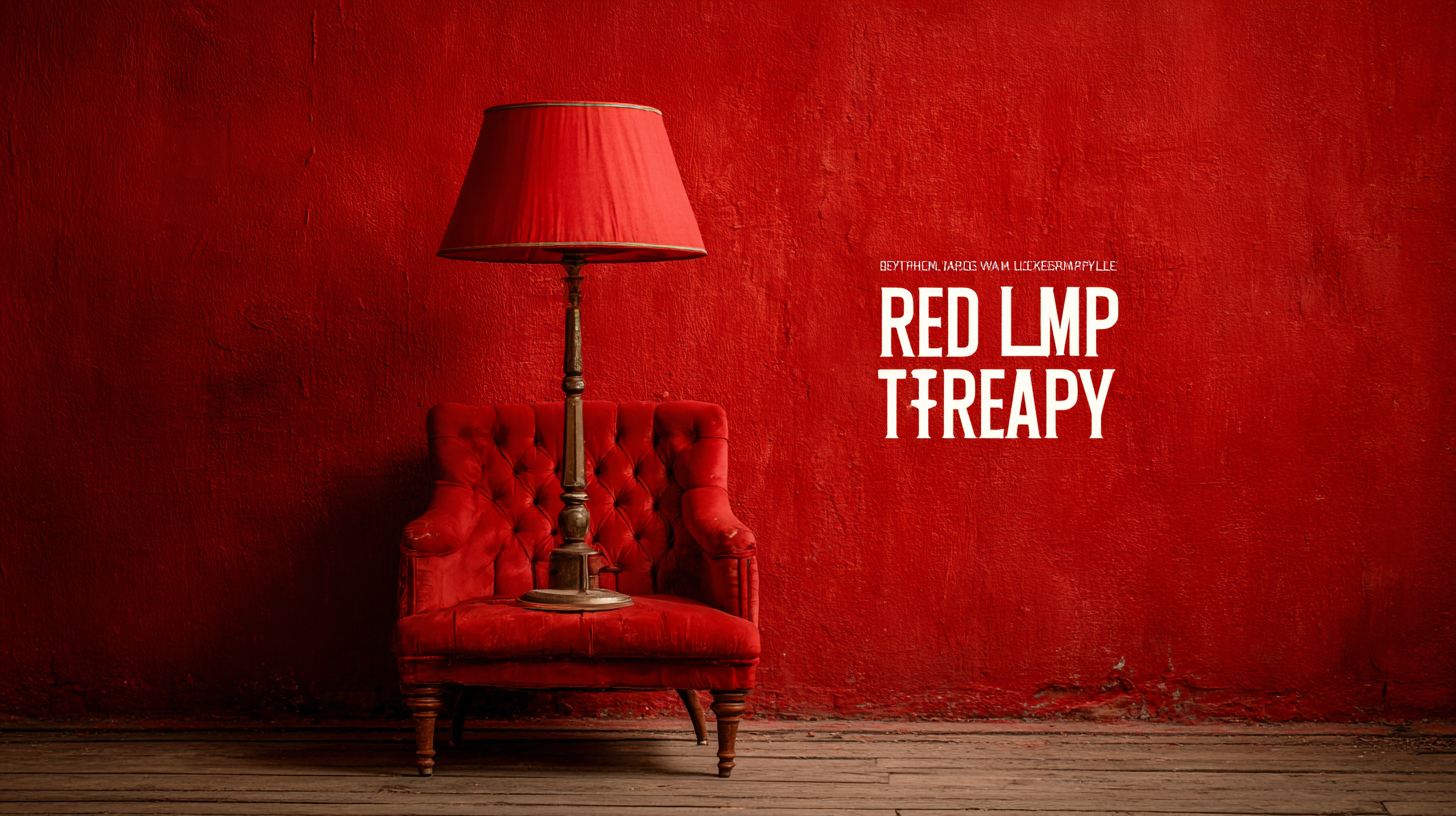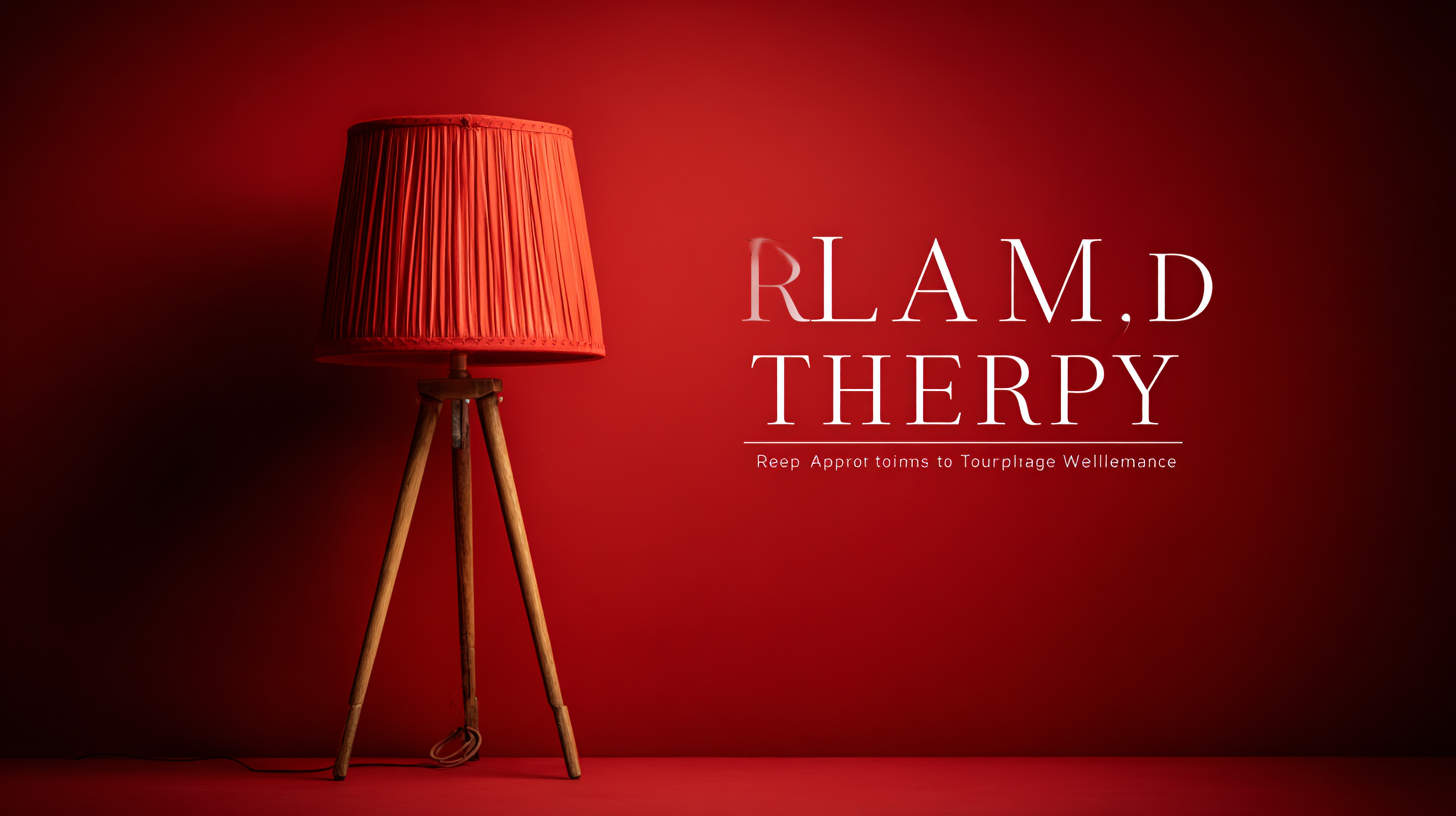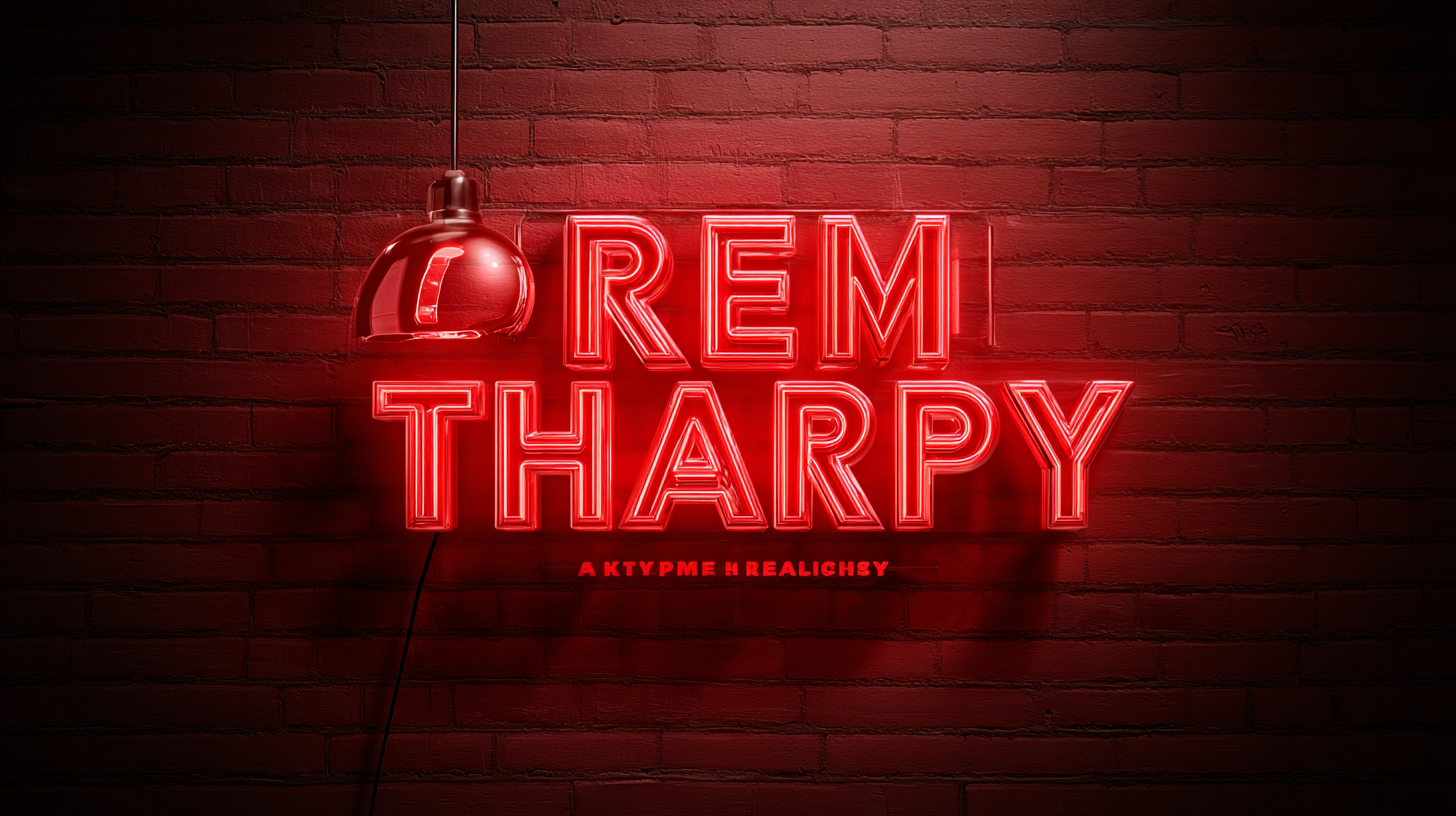Exploring Alternative Options to Best Red Lamp Therapy for Enhanced Wellness
In recent years, Red Lamp Therapy has gained significant attention for its potential health benefits, supported by various studies highlighting its effectiveness in pain relief, inflammation reduction, and overall wellness enhancement. According to a report by Grand View Research, the global phototherapy market, which includes Red Lamp Therapy, is projected to reach USD 3.6 billion by 2025, growing at a compound annual growth rate (CAGR) of over 6%. This rapid growth underscores the rising interest in alternative wellness therapies that harness the power of light to promote healing. As consumers increasingly seek natural and non-invasive treatment options, it's essential to explore not only traditional Red Lamp Therapy but also alternative solutions that can offer similar advantages. This blog will delve into the various alternatives to Red Lamp Therapy, discussing their potential efficacy, user experiences, and how they align with the growing trend of health-conscious living.

Understanding Red Lamp Therapy: Benefits and Mechanisms for Wellness
 Red lamp therapy, also known as red light therapy (RLT), has gained traction for its potential health benefits, including pain relief, skin enhancement, and injury recovery. Understanding the mechanisms behind this non-invasive treatment reveals how it aids wellness.
Research shows that red light wavelengths can penetrate the skin to stimulate cellular metabolism, increase ATP production, and enhance blood circulation. These biological processes contribute to reduced inflammation and accelerated healing in tissues, making RLT an appealing alternative to traditional pharmaceuticals for chronic pain management.
Red lamp therapy, also known as red light therapy (RLT), has gained traction for its potential health benefits, including pain relief, skin enhancement, and injury recovery. Understanding the mechanisms behind this non-invasive treatment reveals how it aids wellness.
Research shows that red light wavelengths can penetrate the skin to stimulate cellular metabolism, increase ATP production, and enhance blood circulation. These biological processes contribute to reduced inflammation and accelerated healing in tissues, making RLT an appealing alternative to traditional pharmaceuticals for chronic pain management.
Moreover, evidence indicates that RLT is effective in the treatment of various skin conditions such as acne and signs of aging. For example, clinical studies have reported significant improvements in skin texture and a reduction in wrinkles after consistent use of red light therapy. Patients seeking alternative healing methods are increasingly drawn to RLT, demonstrating its potential as a staple in wellness routines. With ongoing advancements in at-home therapy devices, this once-exclusive treatment becomes available to a broader audience, paving the way for enhanced overall health and vitality.
Comparing Red Lamp Therapy with Other Alternative Wellness Options
Red lamp therapy, also known as red light therapy, has garnered attention for its potential health benefits, including reducing inflammation, promoting wound healing, and enhancing overall well-being. However, as individuals seek holistic approaches to health, it’s important to explore alternative options that might supplement or provide similar advantages.
Techniques such as infrared sauna therapy, which utilizes heat to promote detoxification and relaxation, can be a compelling alternative for those looking to enhance wellness through different means.
Another popular option is LED light therapy, which employs various wavelengths to target specific skin concerns and improve skin health. By comparing these methods alongside red lamp therapy, individuals can make informed decisions tailored to their unique health needs. Additionally, practices like acupuncture and yoga offer mind-body benefits that can complement the effects of light therapy, emphasizing a more comprehensive approach to wellness. Each of these alternative options brings its own unique set of benefits that can work synergistically, emphasizing the importance of considering a multifaceted approach to health and well-being.
Innovative Technologies in Light Therapy: What’s New on the Market?
As wellness trends continue to evolve, light therapy has emerged as a popular option for holistic health. Among the latest innovations in this field, new technologies are redefining the effectiveness and accessibility of light therapy. These advancements include portable devices that utilize red, blue, and near-infrared light spectrums, making therapeutic benefits available at home or on the go. With options like LED masks for skin rejuvenation and handheld devices for targeted muscle recovery, individuals can easily incorporate light therapy into their daily routines.

Additionally, recent research has shown that innovative light therapy systems can address specific health concerns, such as inflammation and mood enhancement. For example, wearable devices that sync with mobile apps are providing tailored light exposure plans based on personal health data. This personalized approach not only boosts user engagement but also maximizes the potential benefits of light therapy. As consumers become increasingly aware of these emerging technologies, the possibilities for enhanced wellness through light therapy seem brighter than ever.
Safety and Efficacy: Assessing the Use of Red Lamp Products
When considering the use of red lamp therapy for enhanced wellness, it’s vital to assess the safety and efficacy of these products thoroughly. Red light therapy is often hailed for its purported benefits, including skin rejuvenation, pain relief, and improved muscle recovery. However, the effectiveness of these devices can vary significantly based on their design, wavelength, and intensity. Consumers should seek out products that have been clinically tested or backed by scientific research to ensure they are making informed choices.
Safety is another critical aspect to consider with red lamp products. While generally considered safe, improper usage or low-quality devices may lead to unwanted side effects such as skin irritation or burns. It’s essential to follow manufacturer guidelines and perhaps consult a healthcare professional before starting any new therapy. Furthermore, understanding the long-term effects and interactions with other treatments can safeguard users from potential risks. By carefully evaluating the safety and efficacy of red lamp therapy options, individuals can make empowered choices that enhance their wellness journey.
Exploring Alternative Options to Best Red Lamp Therapy for Enhanced Wellness - Safety and Efficacy: Assessing the Use of Red Lamp Products
| Product Type |
Wavelength (nm) |
Power Output (W) |
Safety Rating |
Efficacy Rating |
Usage Duration (min) |
Recommended Frequency |
| Handheld Device |
600-650 |
10 |
A+ |
High |
10-20 |
2-3 times/week |
| Full-Body Panel |
600-660 |
50 |
A |
Moderate |
15-30 |
3-5 times/week |
| Red Light Mask |
620-640 |
20 |
B+ |
High |
20-30 |
Daily |
| Infrared Lamp |
800-850 |
30 |
A |
Moderate |
10-15 |
2-4 times/week |
Choosing the Right Red Lamp Device: A Guide for Consumers
When selecting a red lamp device for enhanced wellness, it’s essential to consider factors like wavelength, power output, and device size. Research indicates that wavelengths between 600 to 650 nm are particularly effective for skin rejuvenation, while wavelengths ranging from 800 to 850 nm assist in deeper tissue repair. A study published in the Journal of Photobiology highlights that effective red light therapy can increase cellular regeneration up to 70%, making the choice of the right device critical for consumers seeking these health benefits.
Power output is another vital consideration. Devices with a higher irradiance rating, measured in milliwatts per square centimeter (mW/cm²), deliver more effective treatments in a shorter time frame. According to a report by the National Institutes of Health, a higher power output correlates with enhanced therapeutic outcomes, providing quicker relief from pain and inflammation. Additionally, consumers should assess the device size to ensure it meets their specific treatment needs, whether for localized pain relief or broader-area therapies. Ultimately, making an informed choice requires understanding these key elements to maximize the benefits of red lamp therapy.






 Red lamp therapy, also known as red light therapy (RLT), has gained traction for its potential health benefits, including pain relief, skin enhancement, and injury recovery. Understanding the mechanisms behind this non-invasive treatment reveals how it aids wellness.
Research shows that red light wavelengths can penetrate the skin to stimulate cellular metabolism, increase ATP production, and enhance blood circulation. These biological processes contribute to reduced inflammation and accelerated healing in tissues, making RLT an appealing alternative to traditional pharmaceuticals for chronic pain management.
Red lamp therapy, also known as red light therapy (RLT), has gained traction for its potential health benefits, including pain relief, skin enhancement, and injury recovery. Understanding the mechanisms behind this non-invasive treatment reveals how it aids wellness.
Research shows that red light wavelengths can penetrate the skin to stimulate cellular metabolism, increase ATP production, and enhance blood circulation. These biological processes contribute to reduced inflammation and accelerated healing in tissues, making RLT an appealing alternative to traditional pharmaceuticals for chronic pain management.